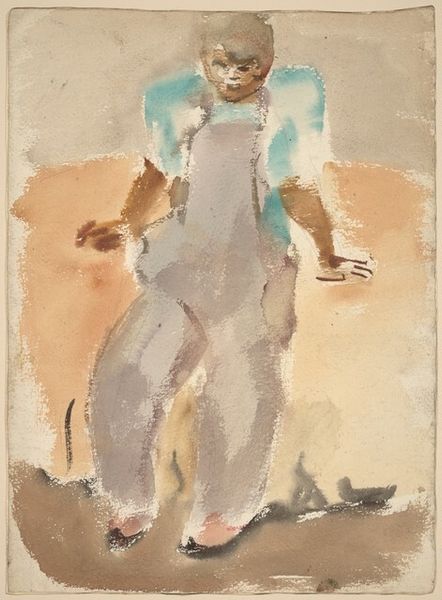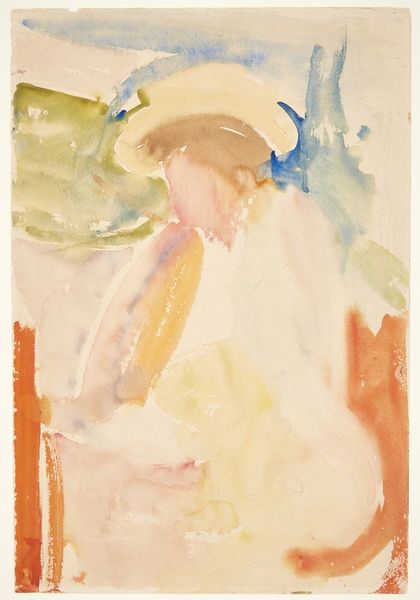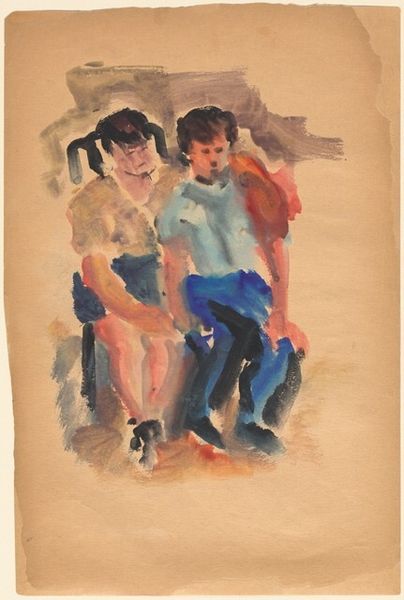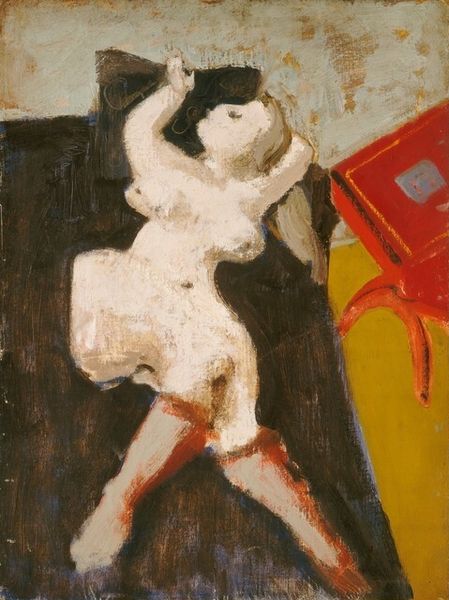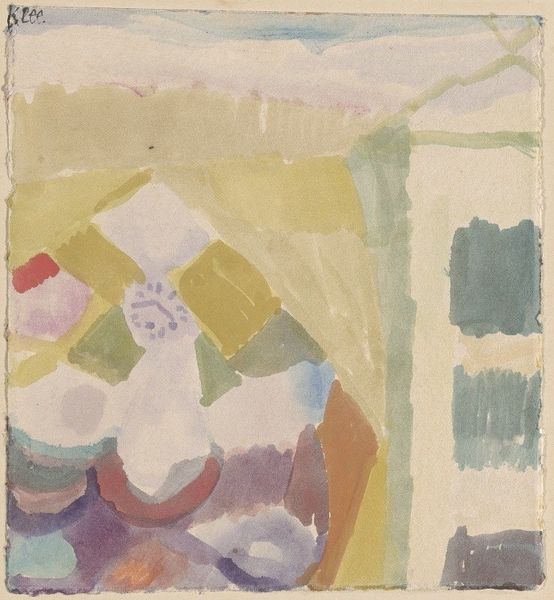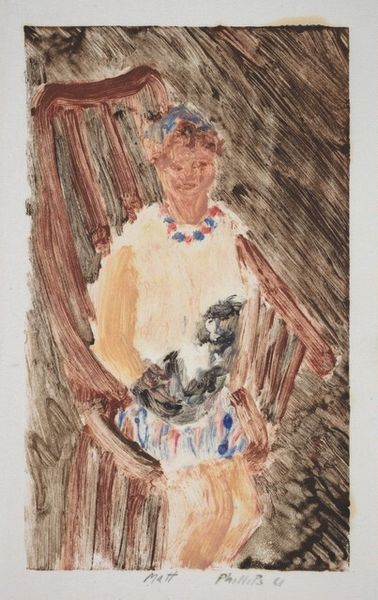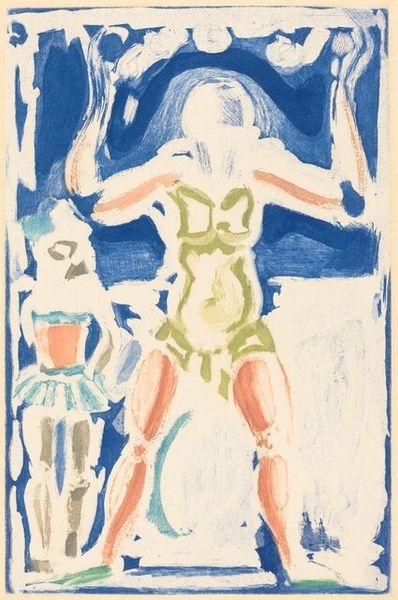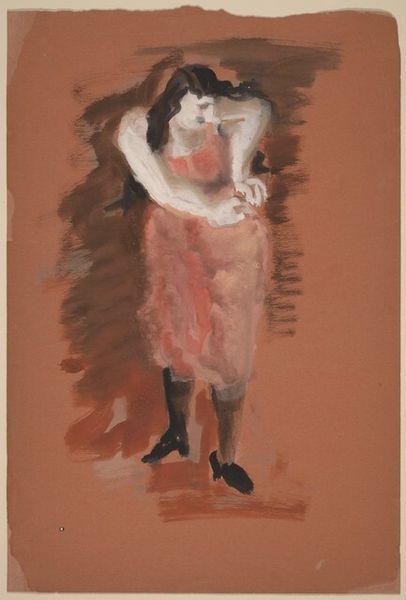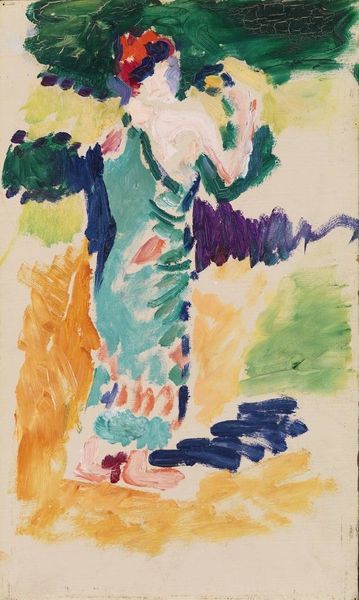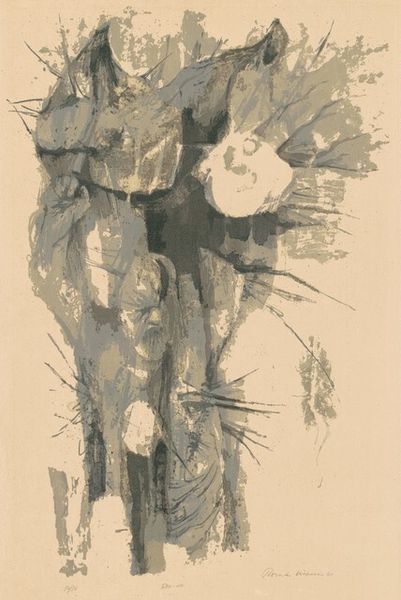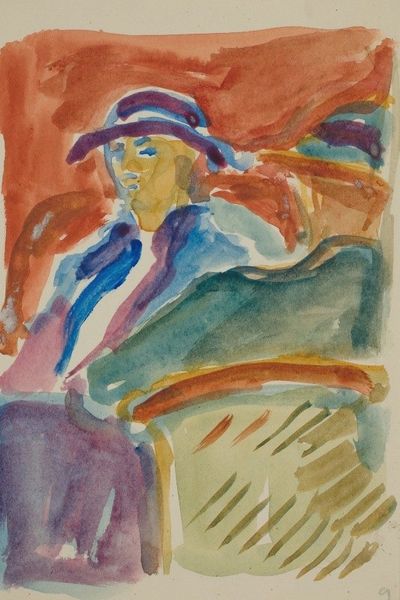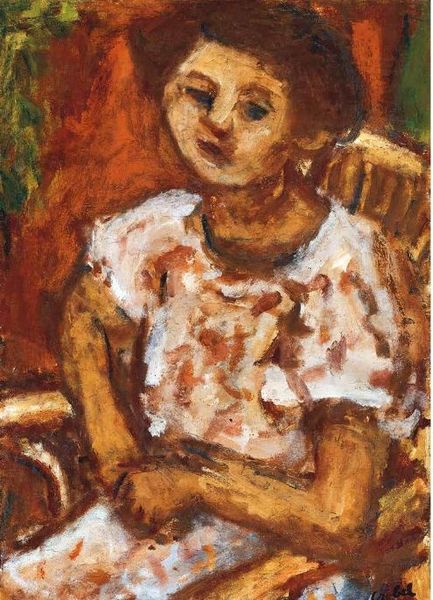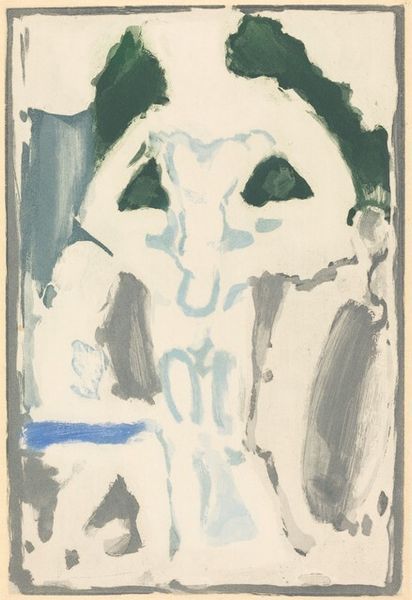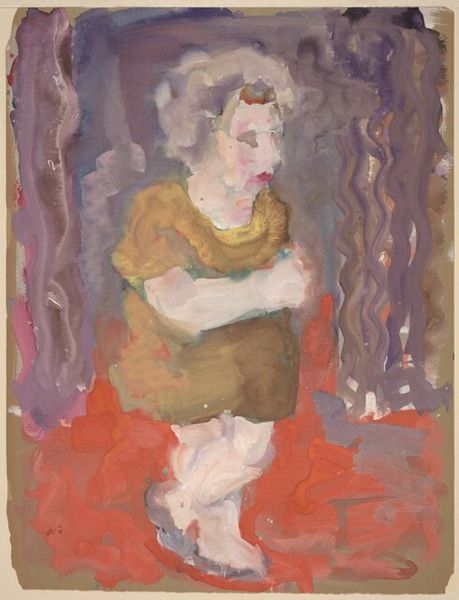
Man Wearing Overalls and Hat Sitting in a Rocking Chair 1933 - 1934
0:00
0:00
drawing, watercolor
#
portrait
#
drawing
#
figuration
#
watercolor
#
genre-painting
#
modernism
#
realism
Dimensions: sheet: 38.74 x 28.58 cm (15 1/4 x 11 1/4 in.)
Copyright: National Gallery of Art: CC0 1.0
Editor: This is Mark Rothko’s "Man Wearing Overalls and Hat Sitting in a Rocking Chair," created around 1933-34, using watercolor. I’m struck by how unassuming it feels, like a candid snapshot. How would you interpret this piece? Curator: I see here the residue of labor, captured in the man's clothing. The worn overalls, the simple hat – these aren’t just stylistic choices, they speak to the subject's class and working life, wouldn't you say? Editor: I hadn't really considered it that way, focusing more on the pose and the somewhat blurry rendering. Curator: Exactly, even the watercolor medium contributes. It's easily transportable and affordable, linking its accessibility to the social class being depicted. Did Rothko choose watercolor randomly, or was the method important? Consider also that "Realism" can also be read as a commitment to depicting a social reality. Editor: That’s interesting. I was initially reading this as a more straightforward, almost observational piece. The medium and its associations completely change the context for me. So, it's not just about what he's painting, but how he’s doing it? Curator: Precisely. The 'how' informs the 'what,' in this case reflecting the materials and accessibility aligned with portraying working-class individuals. Even the choice to depict him at leisure offers a glimpse into his daily existence, challenging elitist notions surrounding what’s ‘worthy’ of artistic representation. Editor: So, understanding the materiality really unlocks deeper layers of meaning. I appreciate your highlighting of the social context informing Rothko’s approach to artmaking, not just in the subject matter, but down to the type of paint. Curator: Absolutely, examining the process reveals powerful narratives often overlooked.
Comments
No comments
Be the first to comment and join the conversation on the ultimate creative platform.
